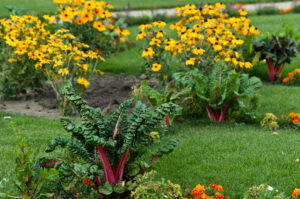
Community Gardens: Cultivating Connections and Sustainability
Community gardens are vibrant hubs where neighbours come together to cultivate fresh produce, foster a sense of belonging, and promote sustainable living. These green oases provide a space for gardening enthusiasts and offer many benefits that extend far beyond the garden gates. In this blog, we’ll explore community garden projects and why they are becoming increasingly popular in the UK.
Identifying the Location: Nurturing the Seeds of Community
One of the first steps in establishing a community garden project is identifying the right location. This often involves contacting the local council to find out who the landowner is and requesting permission for your project. Community gardens can spring up in various spaces, from vacant lots to public parks or even on the grounds of schools and community centres. Securing the right location is essential to kickstart the project and ensure its sustainability.
Enhancing Crop Diversification and Growing Seasons: The Role of Polytunnels and Cages
With a larger space available, community gardens can extend their potential by enhancing crop diversification and the growing season. This is achieved through the installation of polytunnels and fruit and vegetable cages. Polytunnels, in particular, create a controlled environment that protects plants from harsh weather conditions and pests, allowing for a wider variety of crops to be grown throughout the year. These additions increase the garden’s productivity and provide learning opportunities for gardeners of all ages.
Bringing Communities Together: Cultivating Bonds and Sustainability
Community gardens are more than just places to grow fruits and vegetables; they serve as catalysts for building stronger bonds within the community. By collaborating on gardening projects, neighbours get to know each other, share experiences, and build a sense of belonging. These gardens become places where people of all ages can connect, learn, and thrive together.
A Greener Footprint: Reducing Carbon Emissions One Garden at a Time
Community gardens play a significant role in reducing the community’s carbon footprint. By producing local, organic food, they help reduce the need for long-distance transportation of produce, thereby lowering carbon emissions. Moreover, these gardens often implement sustainable gardening practices such as composting and rainwater harvesting, further contributing to environmental conservation.
Access to Fresh Produce: A Bounty for All
One of the most tangible benefits of community gardens is increased access to fresh, locally-grown produce. Access to affordable fresh food can be limited in many communities, especially urban areas. Community gardens bridge this gap by providing a source of nutritious, homegrown fruits and vegetables accessible to all, regardless of income.
Learning Opportunities for Children: Sowing Seeds of Knowledge
Community gardens offer invaluable learning opportunities for children. They can get hands-on experience in planting, tending, and harvesting crops, fostering a deeper connection to nature and the food they consume. These gardens serve as outdoor classrooms where children can learn about biology, ecology, and sustainability practically and engagingly.
Improved Health: Sowing Seeds of Well-being
Engaging in gardening activities not only promotes physical health but also supports mental well-being. Gardening provides exercise, fresh air, and a sense of accomplishment. It can be a therapeutic activity that reduces stress and fosters a sense of purpose.
In conclusion, community garden projects are more than just places to grow vegetables; they are vibrant centers for community building, sustainability, and education. These gardens offer learning opportunities for children, improve community health, strengthen social bonds, increase access to fresh produce, and reduce the community’s carbon footprint.
As more communities embrace the concept of community gardens, they sow the seeds of a greener, healthier, and more connected future for all.